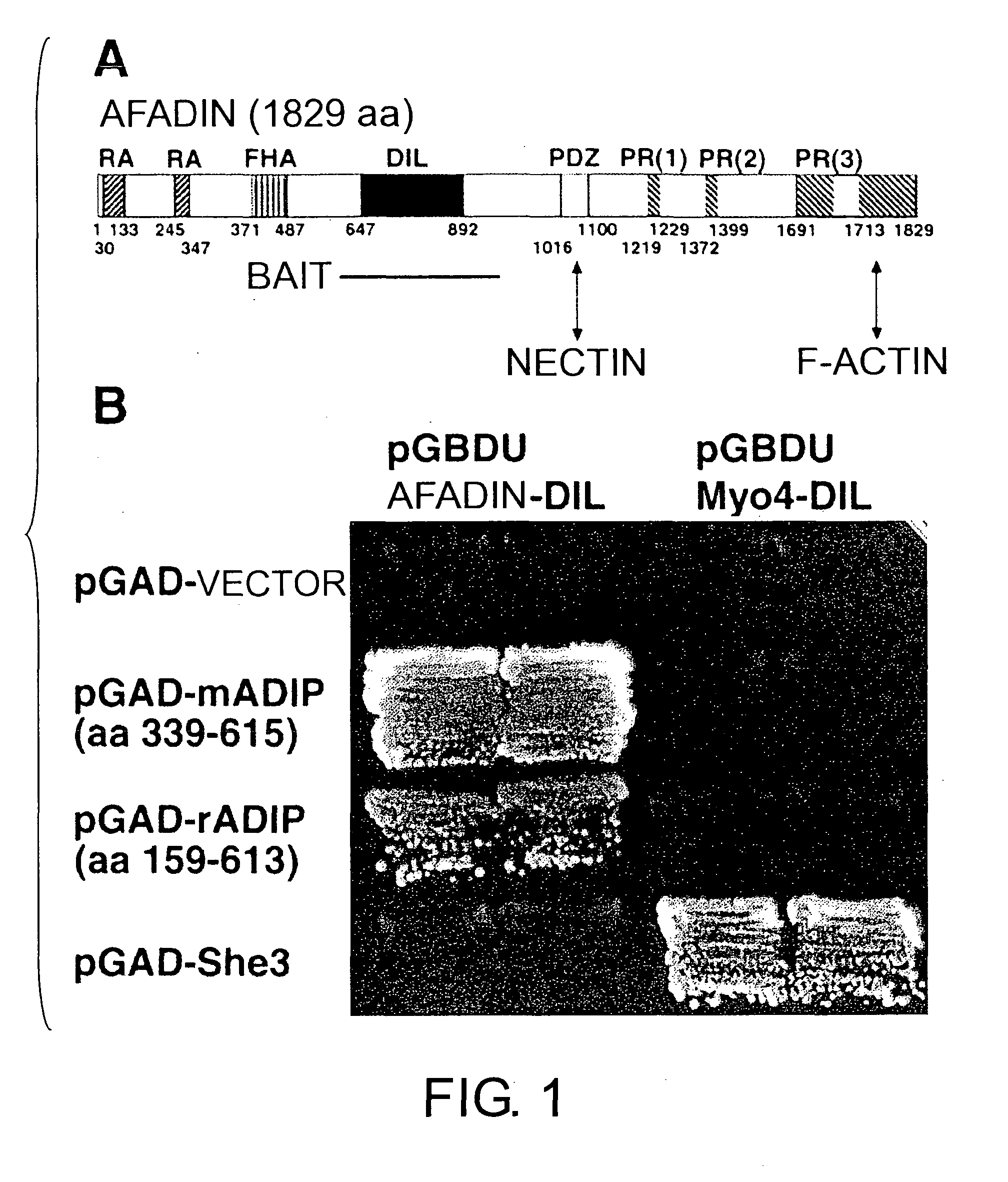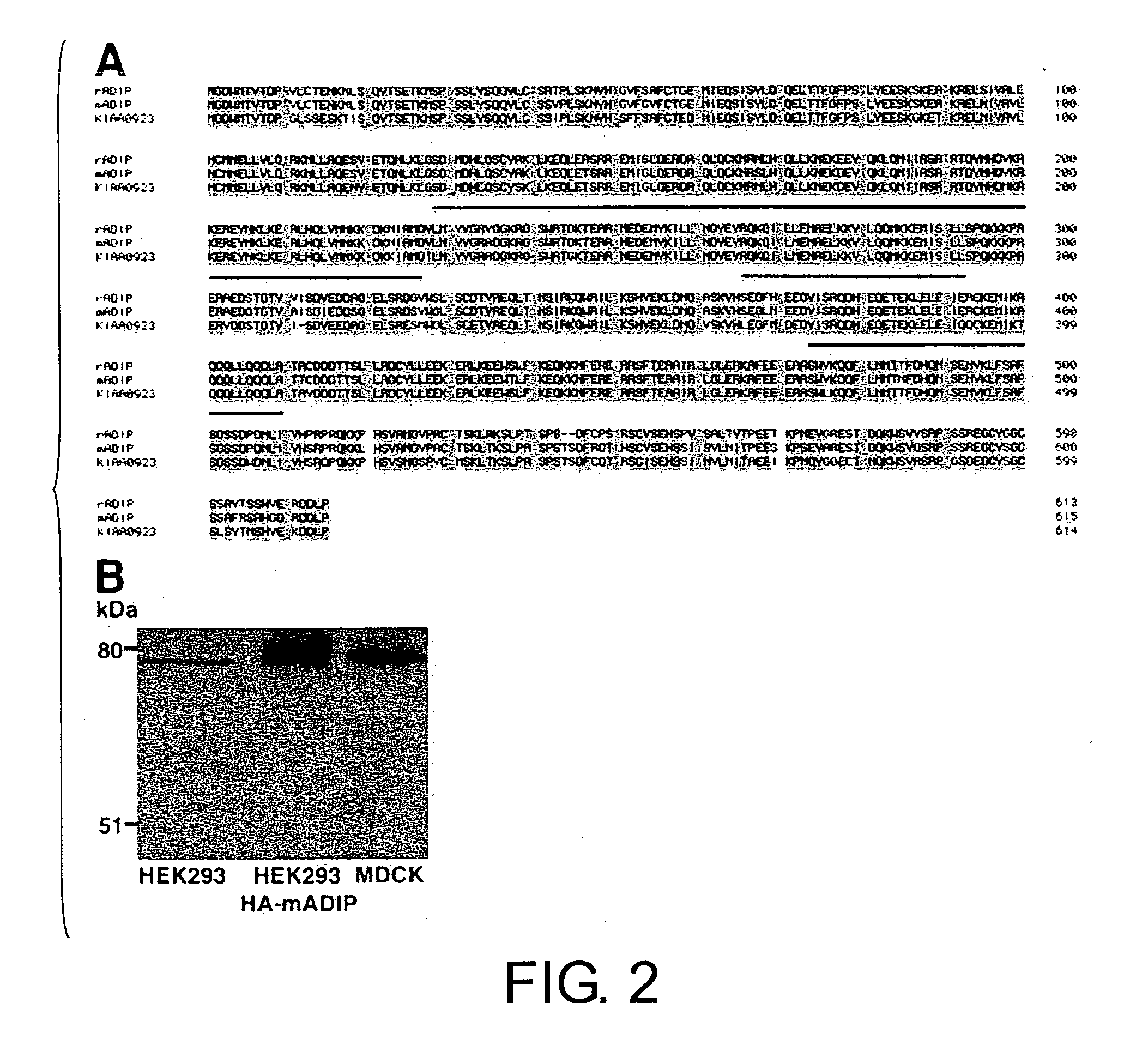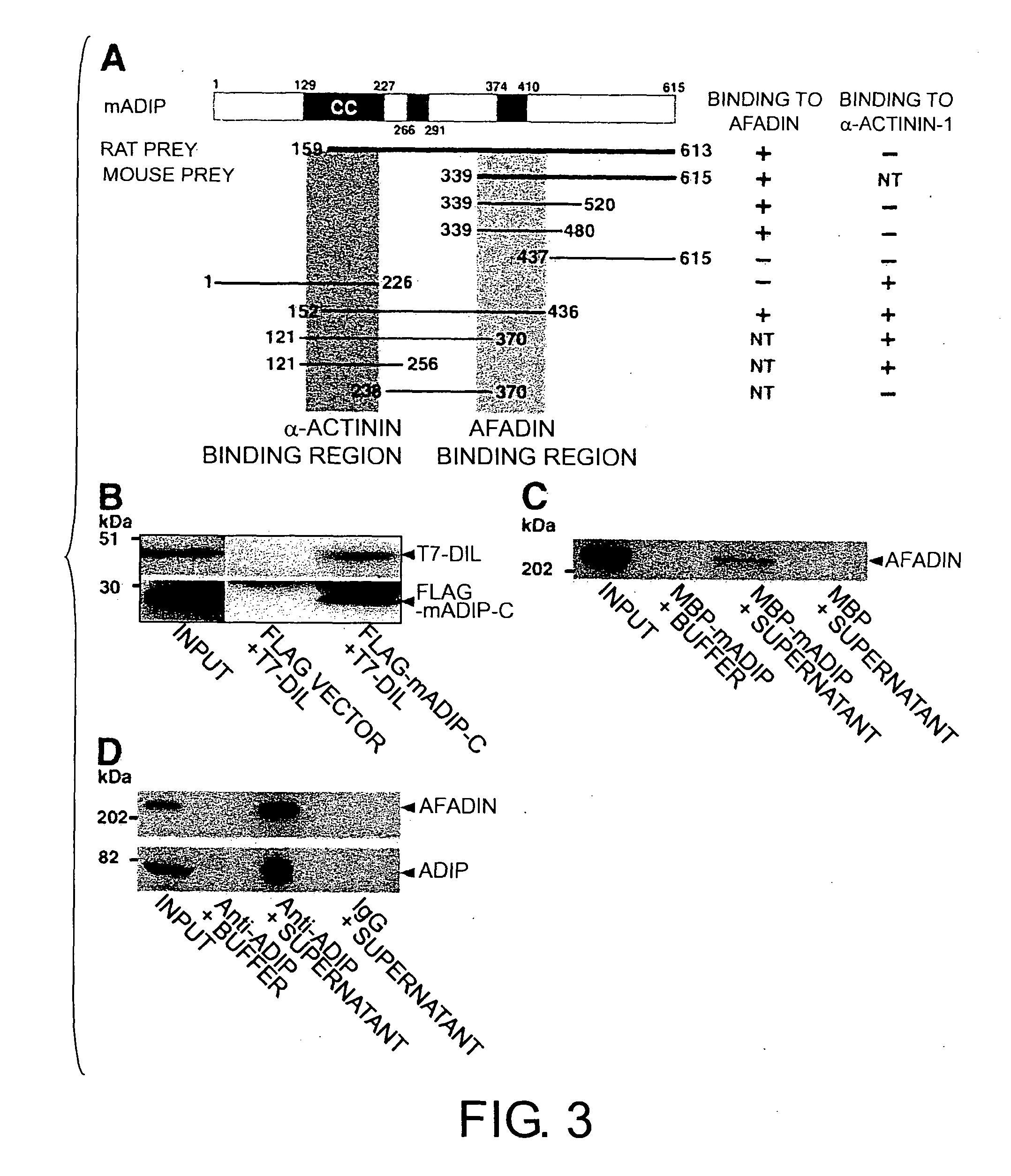ADIP protein and use thereof
a technology of adip protein and adip protein, which is applied in the field of new adip protein dil domain binding protein, can solve the problems that the molecular mechanism of the nectin-afadin system organizing these intercellular junctions is not yet fully understood, and achieve the effect of elevating the level of polypeptid
- Summary
- Abstract
- Description
- Claims
- Application Information
AI Technical Summary
Benefits of technology
Problems solved by technology
Method used
Image
Examples
example 1
Construction of Expression Vectors
[0149] Mammalian expression vectors, pCMV-FLAG, pCMV-T7 and pCMV-HA, were designed to express N-terminal FLAG-, T7- and HA-tagged proteins, respectively (G. Takaesu, S. Kishida, A. Hiyama, K. Yamaguchi, H. Shibuya, K. Irie, J. Ninomiya-Tsuji and K. Matsumoto, “TAB2, a novel adaptor protein, mediates activation of TAK1 MAPKKK by linking TAK1 to TRAF6 in the IL-1 signal transduction pathway.” Mol. Cell 2000, 5: 649-658).
[0150] The mammalian expression vector expressing the DIL domain (amino acids (aa) 606-983) of afadin was constructed using pCMV-T7.
[0151] The mammalian expression vectors pCMV-HA-mADIP (aa 1-615), pCMV-HA-rADIP-C (aa 159-613), pCMV-HA-mADIP-C (aa 339-615), pCMV-FLAG-mADIP-C (aa 339-615) and pCMV-FLAG-mADIP-M (aa 152-436), expressing mouse ADIP (mADIP) and rat ADIP (rADIP), were constructed using pCMV-FLAG or pCMV-HA.
[0152] The mammalian expression vector, pCMV-HA-α-actinin-1-C (aa 406-892), expressing α-actinin-1 (human, BC015766;...
example 2
Preparation of Antibody
[0154] GST fusion proteins of fragments of rADIP C-terminus (aa 159-613; rADIP), mADIP N-terminus (aa 1-226; mADIP-N) and mADIP C-terminus (aa 339-615; mADIP-C) were produced in Escherichia coli, purified and then each of the proteins were used as an antigen to raise rabbit pAb.
[0155] Two pAbs against rADIP-C and mADIP-C, M05 and M01, were used after affinity purification with MBP-rADIP-C (aa 159-613) and MBP-mADIP-C (aa 339-615), respectively. Another pAb against mADIP-N, M57, was used after affinity purification with GST-MADIP-N (aa 1-226).
[0156] GST- and MBP-fusion proteins were purified with glutathione-sepharose beads (Amersham-Pharmacia Biotech) and amylose resin beads (New England Biolabs), respectively.
[0157] A mouse anti-afadin mAb was prepared according to the literature (T. Sakisaka, H. Nakanishi, K. Takahashi, K. Mandai, M. Miyahara, A. Satoh, K. Takaishi, and Y. Takai, “Different behavior of l-afadin and neurabin-II during the formation and de...
example 3
Cell Culture and Protein Concentration
[0159] HEK293, MDCK, nectin-2α-L and nectin-2α-AC-L cells were cultured in Dulbecco's modified Eagle medium (DMEM) containing 10% fetal calf serum.
[0160] Protein concentration was determined using bovine serum albumin as the protein standard (M. M. Bradford, “A rapid and sensitive method for the quantitation of microgram quantities of protein utilizing the principle of protein-dye binding.” Anal. Biochem. 1976, 72: 248-254).
PUM
| Property | Measurement | Unit |
|---|---|---|
| Fraction | aaaaa | aaaaa |
| Fraction | aaaaa | aaaaa |
| Level | aaaaa | aaaaa |
Abstract
Description
Claims
Application Information
 Login to View More
Login to View More - R&D
- Intellectual Property
- Life Sciences
- Materials
- Tech Scout
- Unparalleled Data Quality
- Higher Quality Content
- 60% Fewer Hallucinations
Browse by: Latest US Patents, China's latest patents, Technical Efficacy Thesaurus, Application Domain, Technology Topic, Popular Technical Reports.
© 2025 PatSnap. All rights reserved.Legal|Privacy policy|Modern Slavery Act Transparency Statement|Sitemap|About US| Contact US: help@patsnap.com



